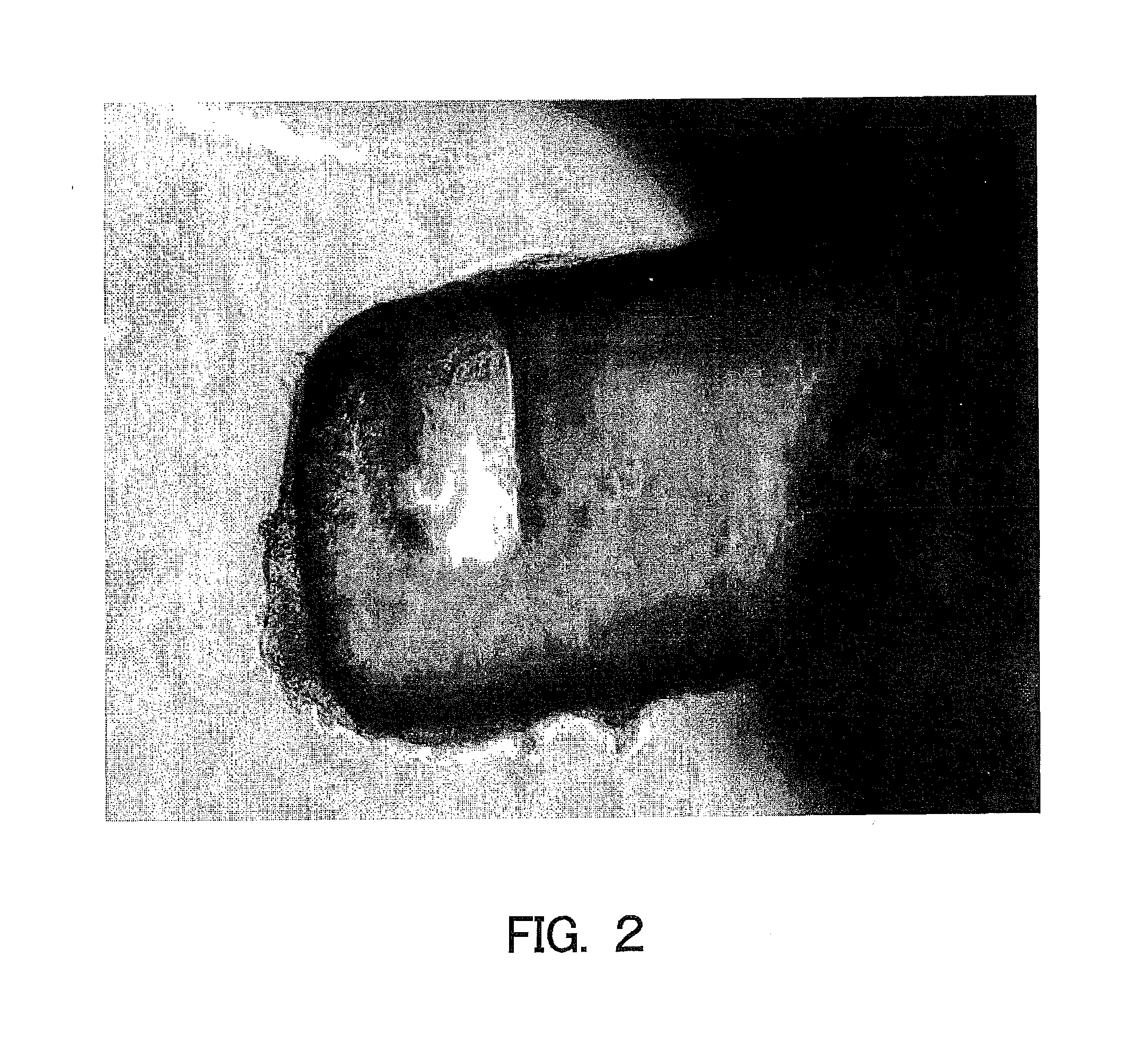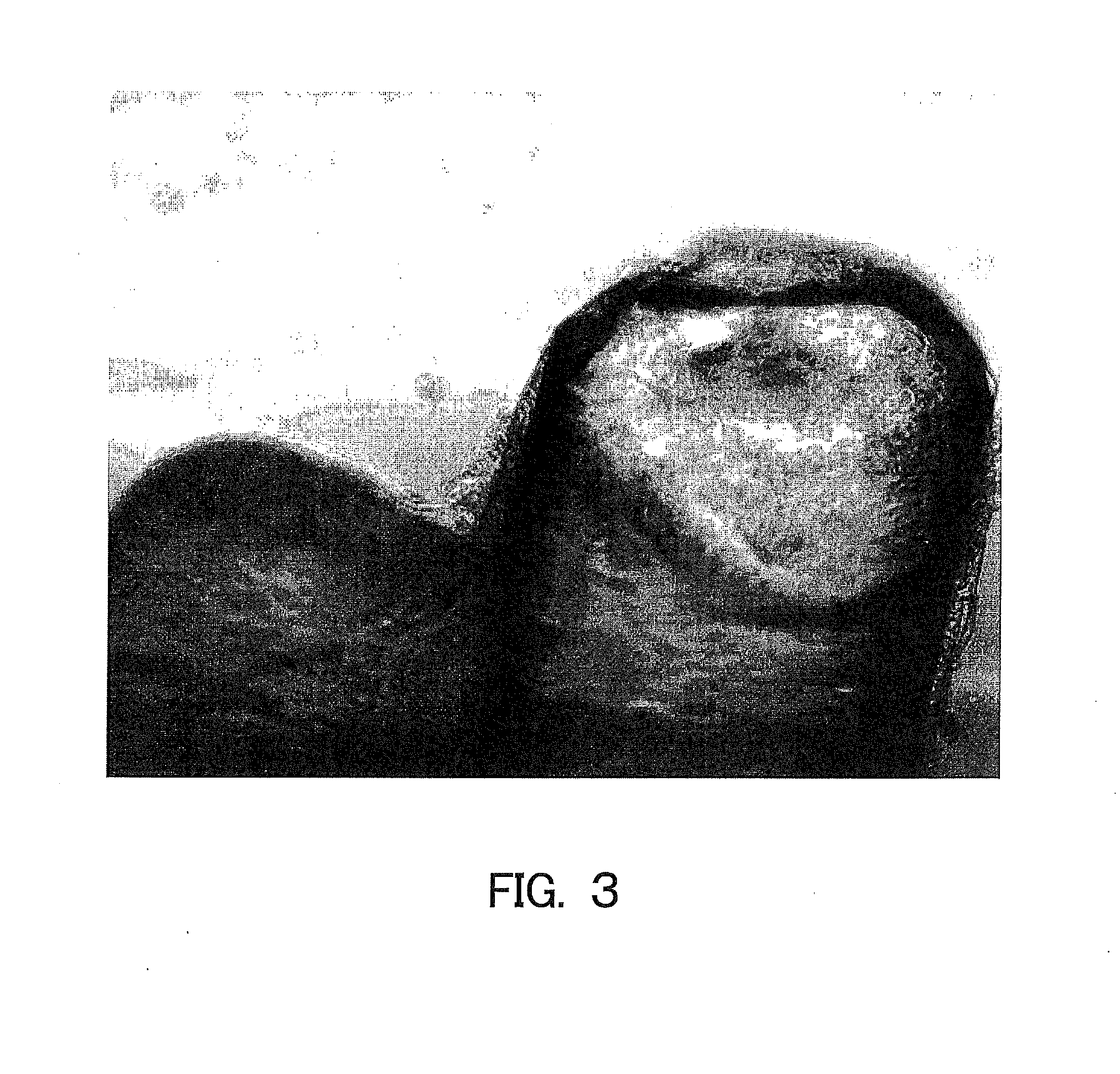Three-dimensional cell culture carrier and method for cell culture using the same
a cell culture and carrier technology, applied in specific use bioreactors/fermenters, biomass after-treatment, biochemical apparatus and processes, etc., can solve the problems of reduced visible light transmittance, difficult observation of cell state, and difficulty in establishing a three-dimensional solid culture that replicates in vivo conditions, etc., to achieve high visible light transmittance, high visible light transparency, and easy to achieve shape, size and porosity or the like. variety
- Summary
- Abstract
- Description
- Claims
- Application Information
AI Technical Summary
Benefits of technology
Problems solved by technology
Method used
Image
Examples
example 1
Method for Producing Three-Dimensional Cell Culture Carrier
[0045]Glass fibers with a fiber diameter of 300 μm were produced by melting and spinning glass with the C-glass composition indicated in Table 2, and the produced glass fibers were roughly cut and crushed. After that, the glass fibers were classified into those having a fiber length distribution of 500 to 1500 μm. Specifically, they were classified by means of test sieves specified in JIS, by dry sieving. The glass fibers that passed through a sieve with a mesh size of 710 μm (pre-sieve) and remained on a sieve with a mesh size 300 μm (post-sieve) were used as sintered body material. 3 g of thus obtained glass fibers (sintered body material) were packed into a ceramic tube with an internal diameter of 13 mm and length of 50 mm. Maintaining the condition, calcination was carried out at a temperature of 670° C. for 1 hour, followed by furnace cooling. After cooling, the glass fibers taken out from the furnace were sliced over ...
example 2
[0057]Samples 2-1 to 2-11 of the three-dimensional cell culture carrier were produced in the same manner as Example 1, except that the fiber diameter and fiber length were changed. Classification was carried out by means of the combinations of sieves (pre-sieve and post-sieve) indicated in Table 3. The glass fibers that passed through the pre-sieve and remained on the post-sieve were used as sintered body material for each sample. The fiber diameters and fiber length distributions of the obtained glass fibers are indicated in Table 4.
TABLE 3MESH SIZE OFMESH SIZE OFPRE-SIEVEPOST-SIEVESAMPLE No.(μm)(μm)2-1150752-23001502-37103002-47103002-510007102-6140010002-77103002-810007102-9140010002-1010007102-1114001000
[0058]Cells were cultured in the same manner as Example 1 by using these samples. Note that Sample 2-4 is the same as the three-dimensional cell culture carrier of Example 1. The eventually obtained cell numbers of these samples were compared to the cell number in the case of usi...
example 3
[0064]Samples 3-1 to 3-4 of the three-dimensional cell culture carrier were produced in the same manner as Example 1 and cells were cultured in the same manner as Example 1, except that the glass fibers with E-glass composition indicated in Table 5 were used and the fiber diameters and fiber lengths were further changed. The evaluation results with respect to these samples that were obtained in the same manner as Example 2 are indicated in Table 6. The glass with E-glass composition used in this example had a visible light transmittance of 50% or more, when the thickness was 3 mm (for example, it had a transmittance of 60% with respect to light having a wavelength of 600 nm).
TABLE 5COMPOSITION(mass %)SiO255.0Al2O314.3CaO23.0MgO0.2B2O35.8Na2O + K2O0.65ZnO—
TABLE 6FIBERFIBER LENGTHEVALUA-SAMPLEDIAMETERDISTRIBUTIONPOROSITYTIONNo.(μm)(μm)(%)RESULT3-1300500 to 150046C3-23001000 to 300064C3-34505000 to 2500039A3-445018000 to 4200052C
[0065]It has been confirmed that the numbers of the cultu...
PUM
| Property | Measurement | Unit |
|---|---|---|
| thickness | aaaaa | aaaaa |
| visible light transmittance | aaaaa | aaaaa |
| aspect ratio | aaaaa | aaaaa |
Abstract
Description
Claims
Application Information
 Login to View More
Login to View More - R&D
- Intellectual Property
- Life Sciences
- Materials
- Tech Scout
- Unparalleled Data Quality
- Higher Quality Content
- 60% Fewer Hallucinations
Browse by: Latest US Patents, China's latest patents, Technical Efficacy Thesaurus, Application Domain, Technology Topic, Popular Technical Reports.
© 2025 PatSnap. All rights reserved.Legal|Privacy policy|Modern Slavery Act Transparency Statement|Sitemap|About US| Contact US: help@patsnap.com



